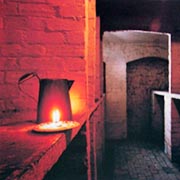13 Brunswick Square
Number 13 was built in the late 1820s by Charles Lynn and Thomas Cooper, local builders, and for the early part of the 19th century the house was rented out.

Description of the interior of number 13 from an auction catalogue listing mansions in Brunswick Square, to be sold at the Royal York Hotel on Wednesday 25th August 1830
It is not easy to track down who owned the house, perhaps more interesting are the people that actually lived there – those who ran their hands along the fine mahogany banister, sat in the well-appointed dining room gazing out to sea, or sipped tea with friends in the drawing room.
Much of the information is found in a section in the Brighton Gazette called the Fashionable Chronicles, which reports the arrivals and departures of the rich and famous. However, information about the earliest residents comes from a different source, the local Parish Burial Records.
For example, here is part of the entry in the Burial Records showing William Cannon Wilmott.

The records tell us that he was born in Portsea Hampshire in 1817 and died at 13 Brunswick Square in 1829, aged just 12 years old. We also learn that William was buried at Hanover Chapel in Brighton on 25th October and the funeral cost £1 1s 0d.
The following years saw a number of different families: Sir Thomas and Lady McMahon, William Haslewood, solicitor to Horatio Nelson, Mr Hinober, Lord and Lady Southwell, Mr Hodges, Mrs Gee and Mrs and the Misses Trowers.
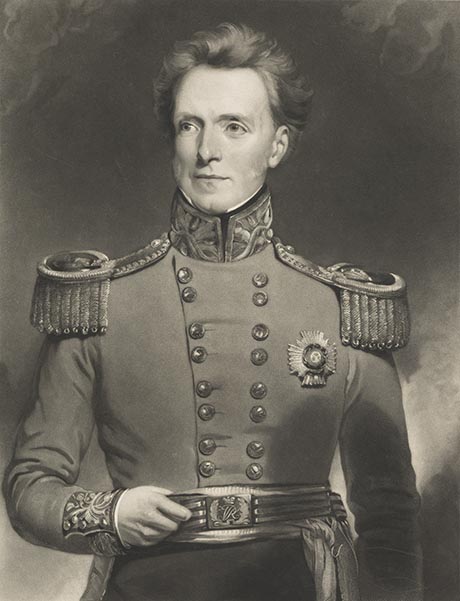
Sir Archibald Galloway, Gallery of Scotland
In 1841 the census reveals that the house was occupied by Sir Archibald Galloway, widower and his 7 children and 5 servants.
Like Sir Thomas McMahon, Archibald was a soldier in India. He married Adelaide Campbell in Bengal in Calcutta (now Kolkota) in 1815. He had 2 sons, George and James, with an unknown woman prior to his marriage. With Adelaide he fathered 12 children, 7 of whom were living with him at the time of the census in 1841.
There is also intriguing but unconfirmed information that his wife Adelaide was drowned at sea off Sulawesi Tengah, Indonesia in April 1832.
After the Galloways' departure there follow various comings and goings, including Mr Goding, Mr and Mrs Rous, Sir C Sailsbury, Mr Bradish and Mr Dallas.
Between 1845 and 1848 Mary Philippa Whitton is listed in the directory as being in residence.
According to the UCL Legacies of British Slavery database, Mary P Whitton counterclaimed unsuccessfully as one of the executors of her husband, William Whitton’s, will for a mortgage on the Brotherton’s Estate in St Kitts and Norton’s Valley Estate in the Virgin Islands. And although her claim was unsuccessful, she is described on the database as a mortgagee. Both estates were sugar plantations and in 1834 Brotherton's had 129 enslaved people and Norton Valley had 84.
At one point William Whitton, a solicitor, managed the affairs of Percy Bysshe Shelley.
The next list of people coming and going included Rev. G. Brown, Mr Sewell, Mr George Braine, Lady Listowel, Mr John Garford.
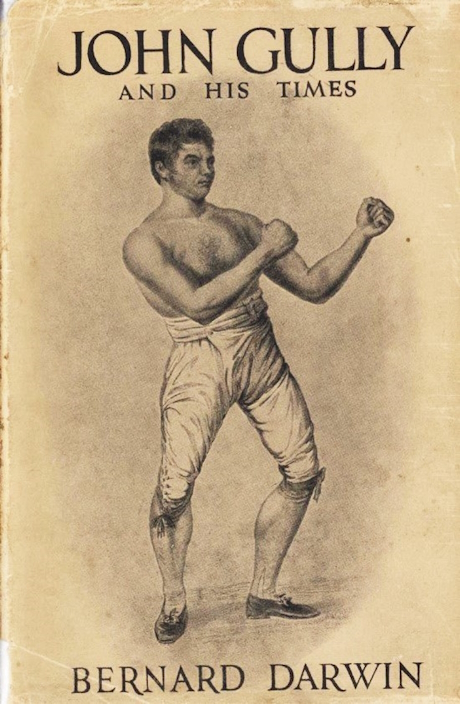
John Gully, bare-knuckle boxer
Mr Gully arrives at number 13 In August 1848 - a man with an extremely colourful past.
John Gully (1783-1863) was born in Wick, near Bath. He inherited his father’s butchery business, but in 1805 it failed and he was imprisoned for debt. While in prison he was visited by his friend Henry Pearce, a well-known prize fighter (this would have been bare knuckle fighting). A fight was arranged between them in the prison and, as a result, John’s debts were settled.
Described as six feet tall with an athletic and prepossessing frame, John went on to engage in more fights, including a bout against Henry Pearce in front of the future King William IV at Hailsham, Sussex.
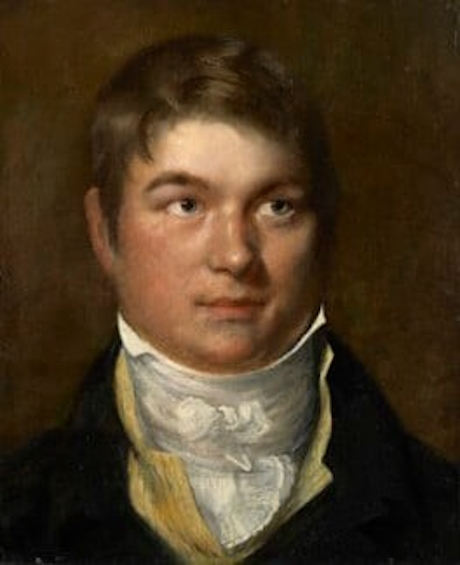
IMAGE John Gully, oil on board by Samuel Drummond, National Portrait Gallery
John Gully retired from fighting in 1808, became landlord of the Plough Tavern in Carey Street, London and took to horse racing, owning several horses and winning and losing vast amounts of money.
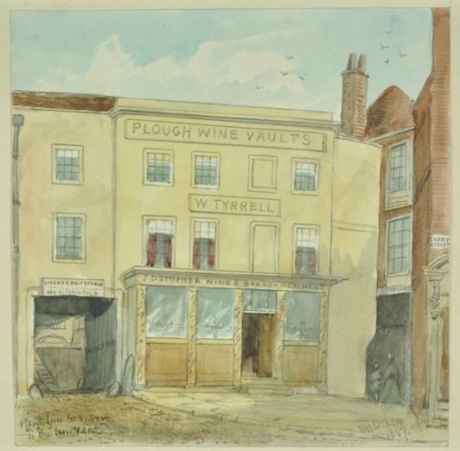
IMAGE Plough Inn, Carey Street, from the London Metropolitan Archives
When he bought Ackworth Park near Pontefract, Yorkshire, in 1832, the Reformers of Pontefract invited their new neighbour to stand as their candidate at the general election. When John visited the town intending to decline their invitation, he was apparently so angered by comments made by the Tory opponents that he changed his mind. His candidature was successful, and he was elected MP for Pontefract from 1832 to 1837.
John rarely spoke in parliament, but he served on several select committees. He declared himself an enemy of all monopolies and a friend of the poor, often voting with Radical and Irish MPs supporting reforms such as the ballot, the removal of bishops from the House of Lords, the abolition of flogging in the army and the reform of the Corn Laws.
John Gully was married twice and had 12 children with each of his wives. He died in March 1863 aged 80.
In July 1850 Lord Valencia arrives at number 13. Arthur Annesley, 10th Viscount Valencia (1785-1863) was an English born landowner. He inherited his title from a distant relative, George Annesley the 9th Viscount. In 1808 he married Eleanor O’Brien and they had 13 children.
There was an incident while he was living at number 13 Brunswick which is worth noting.
On 8th August 1850, the Brighton Gazette published a report of an inquest about a baby having been found dead in the vicinity of number 13. At seven o'clock in the morning, Charles Gillam a shoemaker from Regent Street, Brighton, had gone down the steps of number 13 Brunswick Square to get some wash and saw a brown paper parcel tied with string. On opening the parcel, he saw a baby’s ear and went to get George Breach the inspector of police. Breach untied the parcel and discovered the body of a baby boy.
When questioned William Colly, Lord Valencia’s footman said that he had locked the gate at 11 o'clock the previous evening and had not seen a parcel. The inspector could see no signs of violence and took the baby to James Oldham, a surgeon living in Norfolk Square. The Gazette details Oldham’s examination and as with many newspapers of the time they make grim reading. It appeared that the baby was born alive as it had taken breath, but the cause of death could not be ascertained. Other servants from the house were questioned at the inquest and the jury returned a verdict of “found dead”.
Unfortunately, the report appears to leave many unanswered questions. Whose baby was it? Why leave him wrapped up in a package at number 13 Brunswick Square? Are there any connections to Lord Valencia or his servants? We will never know.
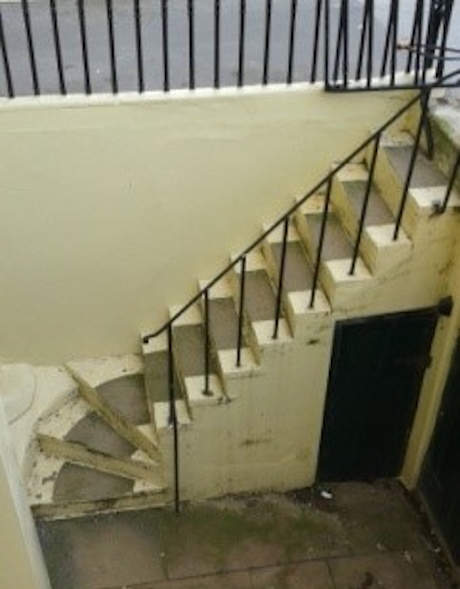
The basement of number 13
Lord Valencia departed Brighton in September 1850.
For the remainder of 1850 a few people came and went, Mr and Mrs Jackson, Mrs Frere May and Lord Milford. In the 1851 census the house is listed as uninhabited.
Then, between September 1851 and 1855, James Neil, Mr Levision, Mrs Royd, Mr Blake, Mr Weir and Mr Goldsmid all resided in the house at some point.
Soon after, two joyful events go some way to counter the tragedy recorded during Lord Valencia’s occupation of number 13.
Moses Levy and his family arrive in September 1855 and the Morning Chronicle reports that on the 3rd October, “the wife of Moses Levy has given birth to a daughter at number 13 Brunswick Square".
Next, on the 11th March 1856, the Reverend Henry Landon Maud’s wife Amelia gave birth to a daughter Constance Elizabeth.
Constance divided her adult life between France and England and became a successful author and was part of the women’s suffrage movement .
One of her best-known novels based on real events was No Surrender published in 1911. It was republished in 2011 to mark the 100th anniversary of its original publication.
Emily Davison, the suffragette who famously threw herself under the King’s horse in 1913, described the book as containing the very spirit of the Women’s Movement.
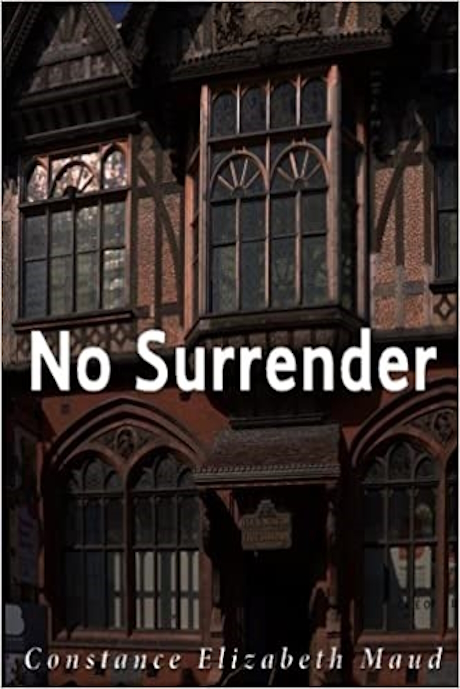
No Surrender is considered an important contribution to the advance of votes for women
In the years which followed the house was largely inhabited by the same people, from 1857 to 1891 the Kepps were in residence and later until 1920 the Furners.
1856 to 1891

This intriguing advertisement was in the Brighton Gazette of 1856, but who was she working for and why was she looking for a change of job? The directory of 1856 lists a Mrs Powell at 13 Brunswick Square but tracking down either Adeline or Mrs Powell has not, so far, been possible.
How is a 1821 newspaper report about St Paul’s Cathedral connected to 13 Brunswick Square?
Read on.
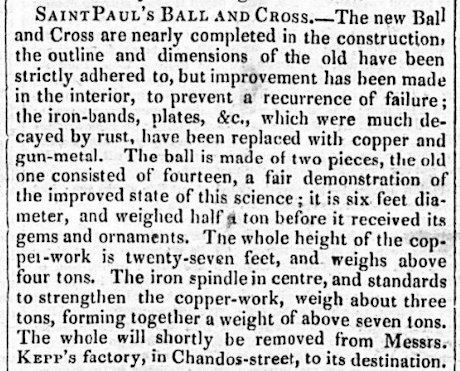
New Times London 12th October 1821
John Kepp, a coppersmith and brazier, lived at 42 Chandos Street, Covent Garden, with his wife Phoebe (Lloyd) who he married at St Martin-in-the-Fields in 1784. The couple had four children Richard (1788-1878), Edward (1791-1875), Julia (1796-1865) and Phoebe (1798-1891).
John died in 1818 leaving the coppersmith business to Richard who, with Edward, continued to run it as R & E Kepp until 1855, when they sold it to Benham & Froud.
The business was a thriving concern, from John Kepp’s premises at number 40 Chandos Street the brothers had expanded into 41 and 42.
It was Richard and sisters Julia and Phoebe who had the greatest association with number 13 Brunswick Square, although Edward was, no doubt, a visitor.
There is no evidence that Richard, Edward or Julia married. In fact, Richard and Julia lived together either in their London home at 15 Sussex Place, Regents Park, or at 13 Brunswick Square, Hove.
The Brighton Gazette between 1857 until 1865 chronicles their comings and goings. For example, on 4th October 1860, the Gazette heralds Julia and Richards’s arrival for the winter and the same newspaper on 14th March 1861 reports their departure for the summer. Several dinner parties are also recorded in the press but, sadly, without a guest list.
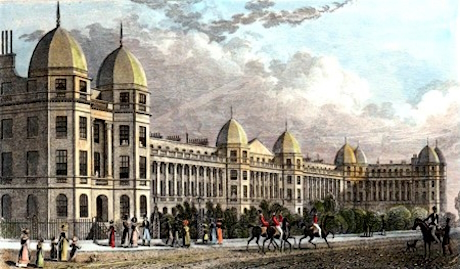
An 1828 engraving of Sussex Place, Regents Park.
Designed by John Nash, it is now the London Business School.
The pattern of Brighton for the winter and London for the summer continued until 1865, when Julia died at the age of 69, at 13 Brunswick Square.

Brighton Gazette, 30th November 1865
The local Brighton directories then list Richard Kepp as the householder of number 13 Brunswick Square between 1859 and 1869, after that he is listed alongside Mrs Wardell (sister Phoebe).
Phoebe was the only sibling who married, albeit briefly. She was wedded to John Wardle in 1837 in Marylebone. She was 39 and he was 51. They were married for 6 short years until he died of apoplexy (probably a stroke) at Gerrard’s Cross. They had no children.

Notice from the Morning Herald, 8th September 1843 – John Wardell
So where was Edward Kepp? He was still in close association with the family. In the 1861 census he was living at 104 Marylebone Road and sister Phoebe was at number 106. Edward died in 1875 followed 3 years later in 1878 by Richard.
Phoebe continued the pattern of living at 15 Sussex Place, London and 13 Brunswick Square for the rest of her long life. She died in 1891 at the London house at the age of 93. In her will she left in the region of £156,000, about 25 million pounds in today’s money.
So a close-knit childless family with a long association to The Regency Town House were gone and where the money ended up is the subject of further research.
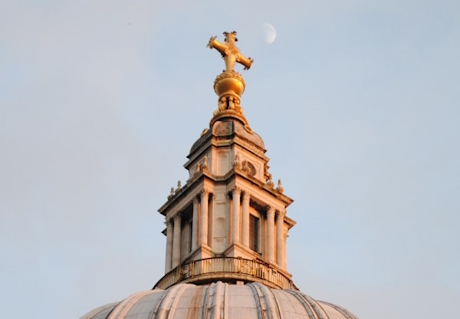
The golden orb and cross that adorns St Paul’s made by R & E Kepp in 1821
The next time you are in the city pause to look atop St Paul’s at the magnificent orb and cross and marvel at the intriguing Kepp connections, or maybe take a stroll to Sussex Place and imagine Richard and Julia preparing for their journey to Brighton for the winter months.
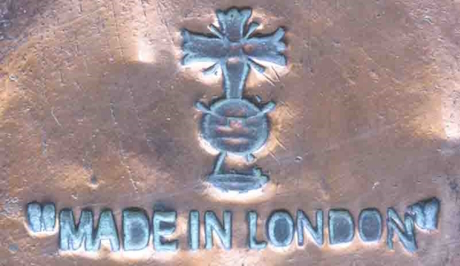
Proud of their achievement, R & E Kepp adopted the St Paul’s orb and cross as the company’s logo
The 1891 census has two of the Kepp's servants living at the house: housekeeper, Mary Anne Agnew aged 53, and housemaid, Christine Matheson aged 34.
Mary Anne’s husband, Edward Agnew, was at the Kepp’s London home at 15 Sussex Place working as a butler. He had been with the family off and on since 1861 when, at 18 years old, he was working for them as a page. The pair married in 1874 at Hurstpierpoint, Mary Anne's birthplace.
After Phoebe Wardell’s death, Edward and Mary Anne moved to Lancing and he took up poultry keeping. Mary Anne died in 1904 aged 66 and in 1905 Edward married Ellen Camfield, who also worked for the Kepps.
1892 to 1920
In 1892 the Furners moved into number 13.
Willoughby Furner (1848-1920) was a doctor like his father, Edmund Joseph Furner. The family lived for several years in Kings Road, Brighton. However, in the 1891 census Edmund was living with his wife Arabella and daughter May O’Brien Furner at 47 Brunswick Square, Willoughby and his wife Ada were at 2 Brunswick Place.
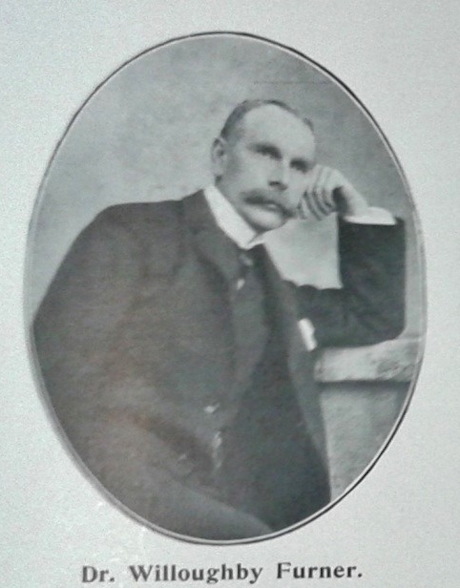
Dr Willoughby Furner
Willoughby had succeeded to his father’s practice in 1876 at the age of 28.
He had trained at St Barthomew’s Hospital and become a demonstrator of anatomy and operative surgery. On taking over his father’s practice he was appointed as assistant surgeon to the Royal Sussex County Hospital as well as to the Blind Asylum and the 1st Sussex Rifle volunteers.
Willoughby Furner married Ada Skipper (1851-1912) in 1888 in Kensington, he was 40 and she was 37. Ada’s father Charles Skipper was a stationer and printer who printed bank notes for the Bank of England and in 1834 published a response to the Poor Law.
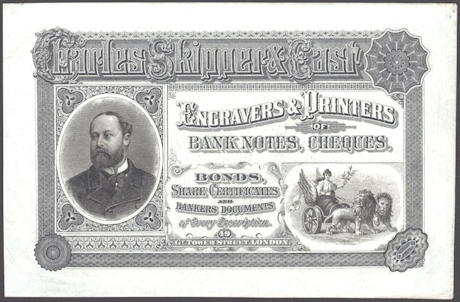
Skipper and East trade card
In 1892 Willoughby and Ada moved into number 13 and played a large part in the life of Brighton. There are frequent mentions of them in the local newspapers. For example the Brighton Gazette reports on 15th January 1903 a ”brilliant gathering at the Royal Pavillion“ with over 500 guests including the Furners.
Willoughby also attended to Eliabeth Gore aged 95 when she was dying. Elizaberth lived at number 26 Brunswick Square and had resided there all her long life. Elizabeth and her family were a large part of life in the town. More about the Gore family in the future.
Ada Furner died in June 1912 and was buried in Brighton Cemetery.
During WW1 Willoughby was a medical officer at the Auxiliary Hospital at 6 Third Avenue.
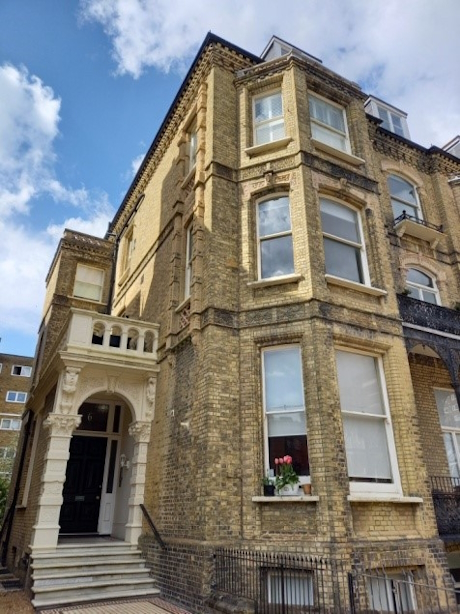
6 Third Avenue, Hove today
The house was loaned to the Red Cross by Sir Cavendish and Lady Boyle for the duration of the war and refurbished to meet the demands of caring for soldiers wounded on the western front. 1,431 patients were treated at Third Avenue over the course of the war.
The Red Cross opened over 3,000 such hospitals across the country to meet the demand of the expected large number of casualties from the front.
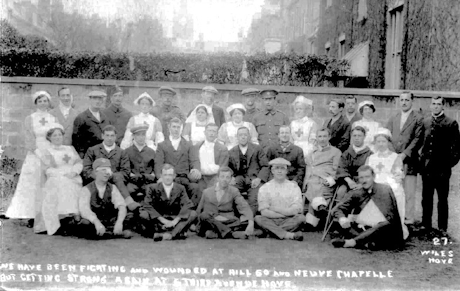
This postcard shows men who were wounded at Hill 60 and Neuve Chapelle recovering in the garden at 6 Third Avenue in 1915. © J Middleton
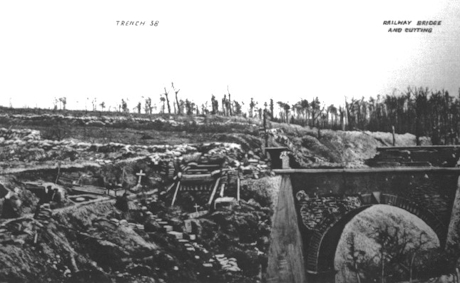
The devestation at Hill 60
In 1920 Willoughby died at number 13 Brunswick Square aged 73 after a long illness, he had received an OBE for the work he had done in WW1 and was buried with Ada in the Brighton Cemetery. This personal obituary seems to sum up how he was seen by someone who knew him well.
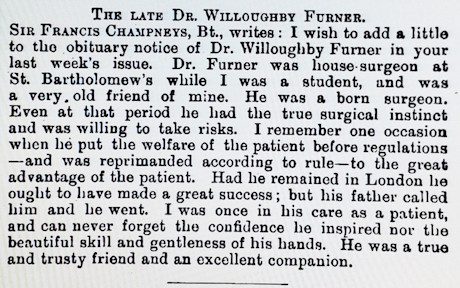
The late Willoughby Furner 1920 obituary
And so a snapshot into the history of some of the people who lived at number 13 Brunswick Square between 1829 and 1920 draws to a close.
Research by Jill Vigus (June 2023)
Return to Brunswick Square page


